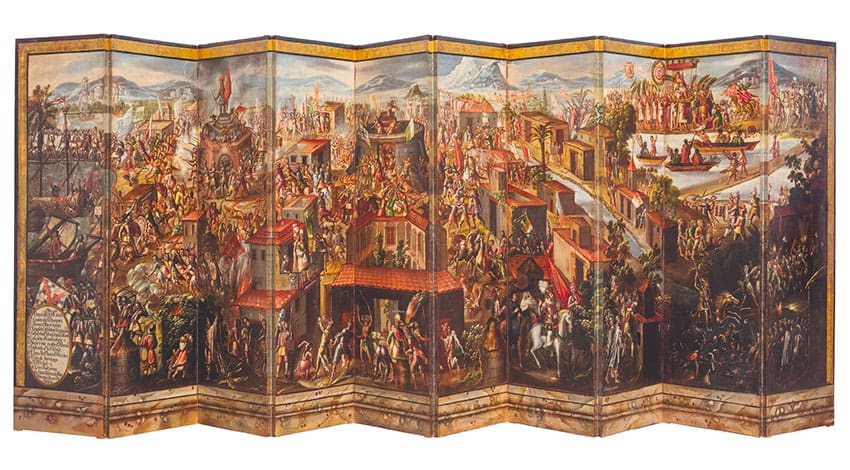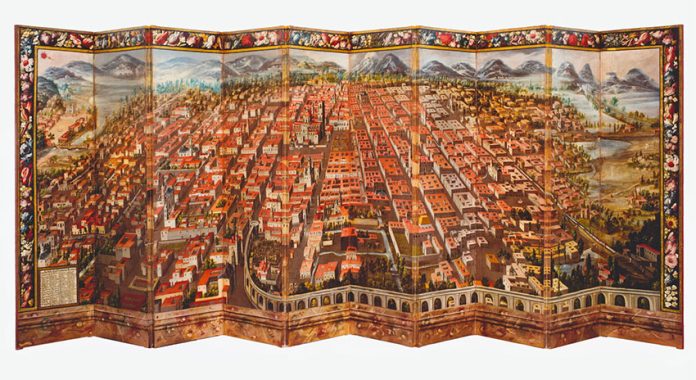Sotheby’s auction house is selling a “once-in-a-lifetime” 17th-century folding screen depicting the conquest of Mexico and the early days of Mexico City.
Bidding for the Japanese-style screen called Biombo de la Conquista de México y Vista de la Ciudad de México (Byōbu of the Conquest of Mexico and View of Mexico City) opened on Thursday and will run until October 11.
Sotheby’s has set a starting bid of US $2.8 million and estimates that the screen will fetch a price between $3 million and $5 million. The artist who created the piece is unknown.
“We are privileged to present this Mexican national treasure for sale this season,” said Anna Di Stasi, director of Sotheby’s Latin American Art Department.
“Emerging from a distinguished private collection, this is the type of historic and powerful work of art that we are honored to handle once in a lifetime.”

Measuring just over two meters high and more than five meters long, the screen is comprised of 10 individual panels.
Sotheby’s said the work “belongs to a specific group of biombos executed in the second half of the 17th century to assert the distinct identity and history of the criollo [American-born Spanish citizens] in New Spain.”
The auction house said the screen is “the greatest work of its kind remaining in private hands” and related to other similar biombos held in public institutions such as the Franz Mayer Museum and the National Museum of History in Mexico City.
On one side is a “richly detailed, violent and dynamic rendering of the conquest of Tenochtitlán,” which was to become Mexico City.
The artwork is inspired by the True History of the Conquest of New Spain, a 16th-century firsthand account of Hernan Cortés’ conquest of Mexico written by fellow conquistador Bernal Díaz del Castillo.
It features several depictions of Cortés and Moctezuma II, the tlatoani, or leader of the Aztec Empire, including the two men’s first meeting. The former is shown alongside an entourage of soldiers and priests at the meeting while the latter is carried on a resplendent throne and surrounded by Aztec noblemen.

Other key scenes from the conquest are shown across the 10 panels, including the arrival of Cortés’ ships in Veracruz, various battles between the Spaniards and Aztecs such as the attack on the Templo Mayor and Moctezuma in his famous last moments before he is stoned to death.
The opposite site of the biombo features a “stunning bird’s eye of the new city” founded by the Spanish, Sotheby’s said.
The artwork, based on a 1628 map of the city, emphasizes “the dignity and nobility of the Americas under Spanish rule” and contrasts “the violent image of the conquest with a vision of peace and order.”
A key in the lower left corner details the names of 71 landmarks featured in the artwork. They include the metropolitan cathedral, the National Palace and the aqueduct of Chapultepec.
Sotheby’s explained that the screen is part of Mexico’s national heritage and cannot be permanently removed from the country.
It is offered for sale online and not available for inspection or delivery outside of Mexico, the auction house said, adding that the painting will be released to the purchaser in Mexico, in compliance with all local requirements.
Source: Art Daily (en)
